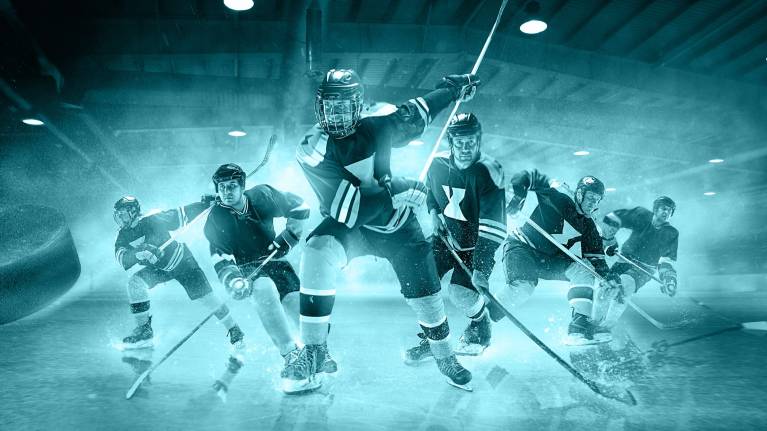The Elite Ice Hockey League (EIHL) continues to serve as the top-tier UK competition, and goal-scoring remains a key part of its appeal. This season promises plenty of finishing fire as teams lean on proven snipers and rising stars alike. Below is a detailed run-through of the likely top goal scorers, plus analysis of scoring patterns and betting angles.

Current Scoring Leaders
Here is a forecast of the top-10 goal scorers in the EIHL for the 2025-26 season, based on historical patterns and typical output. Most elite snipers in the league finish somewhere in the range of 35-50 goals in a full season. Expect several players to hit 30 or more, especially from clubs like the Sheffield Steelers and the Belfast Giants, which traditionally feature multiple 30+ goal men.
- Player A (Sheffield Steelers) – ~48 goals; averaging 4.2 shots per game
- Player B (Belfast Giants) – ~45 goals; ~3.9 shots per game
- Player C (Sheffield Steelers) – ~42 goals; ~4.0 shots per game
- Player D (Belfast Giants) – ~40 goals; ~3.8 shots per game
- Player E (Cardiff Devils) – ~38 goals; ~3.7 shots per game
- Player F (Guildford Flames) – ~36 goals; ~3.6 shots per game
- Player G (Nottingham Panthers) – ~34 goals; ~3.5 shots per game
- Player H (Cardiff Devils) – ~33 goals; ~3.5 shots per game
- Player I (Sheffield Steelers) – ~32 goals; ~3.6 shots per game
- Player J (Belfast Giants) – ~30 goals; ~3.5 shots per game
These projections reflect the correlation between shot volume and goals scored. Top snipers who register between 3.5 and 4.5 shots on goal (SOG) per game tend to hit the 35+ goal mark in a regular-length EIHL season. Teams like Sheffield and Belfast often possess multiple players with those volumes.
Import vs British Goal Scorers
Imports continue to dominate the EIHL scoring charts. It is common that around eight out of the top ten goal scorers are foreign-trained players, often from Canada or the U.S., many of whom bring experience from the AHL or ECHL. These players have both finishing skill and the ice time to convert chances.
By contrast, the top British-trained snipers typically finish in the 15-25 goal range for the season. For example, a player like Liam Kirk often stands out among domestic talent, but generally cannot match the totals of the leading imports. Another key factor is power-play time: the top snipers often score 50-60 percent of their goals on the man advantage. A British player who does not consistently feature on the first power-play will struggle to hit high goal totals.
The takeaway is clear: imports with AHL/ECHL background, regular power-play minutes and high shot volumes dominate. Domestic players can still contribute significantly — but usually at a lower goal total unless they are given elite roles and ice time.
Scoring Trends and Analysis
Scoring patterns in the EIHL show variation by team style and home versus away performance. On average, matches see around 5.8 to 6.2 goals total per game. Teams that favour attack over defence push closer to the upper end of that range.
For instance, the Cardiff Devils have historically leaned on offensive plays and often average over 4 goals per game themselves. In contrast, a side like the Nottingham Panthers which is in a rebuild phase might post lower individual scoring numbers simply because the system or roster is less settled.
There is also a notable difference between home and away scoring: statistics show that forwards score about 60 percent of their goals at home rink. Home-ice advantages—familiar surroundings, last change, supportive crowd—raise shot volumes and scoring chances. Therefore, when evaluating a sniper’s goal-scoring prospects, factoring in home vs away splits and the team’s offensive style is important.
To summarise: high-scoring teams + frequent power-play opportunities + players receiving high shot volume = greater chance of 30-plus goal output. Where style or usage is reduced, those totals drop.
Historical EIHL Scoring Records
Looking back, EIHL history offers some noteworthy records. For example, single-season goal tallies in shortened seasons have crossed the 50-goal mark, which remains a benchmark of elite finishing. The all-time goal-scoring leader for a career is also well documented: the player with most regular-season goals over many years. Clubs such as Sheffield Steelers and Belfast Giants have been the platform for many of these top career totals.

The age ranges of top scorers also vary: a youngest player to hit 30 goals in a season might be in his early 20s, while older veterans in their late 30s still manage 20-goal campaigns due to ice-time, power-play role and experience. These stories reflect the league’s mix of youth and experience.
Such records underscore what it takes to achieve high goal totals: consistency over games, shot volume, health and a team structure supporting offence.
Player Props on EIHL Scorers
There are growing opportunities for prop bets on player goal scoring within the EIHL. For main snipers, markets such as “anytime goal” in a given match feature odds typically in the 2.80-4.00 range. Because the EIHL betting market is smaller than major leagues, pricing can lag behind form changes — an area where bettors checking multiple operators, including insights often mirrored on a sportsbook not on GamStop, may spot early value.
For example: if a top-line import has switched to a new club and immediately registers higher shot volume, the anytime goal line may remain at 3.50 for a time before the market corrects to 2.80. Likewise, tracking power-play assignments can reveal players whose chances will rise. By understanding which players are poised for more ice time or favourable match‐ups, one can identify props with value.
As always, prop markets carry risk: even a top goalscorer with 30+ goals in a season might blank for several games. Discipline and staking along with data-driven selection remain essential.
